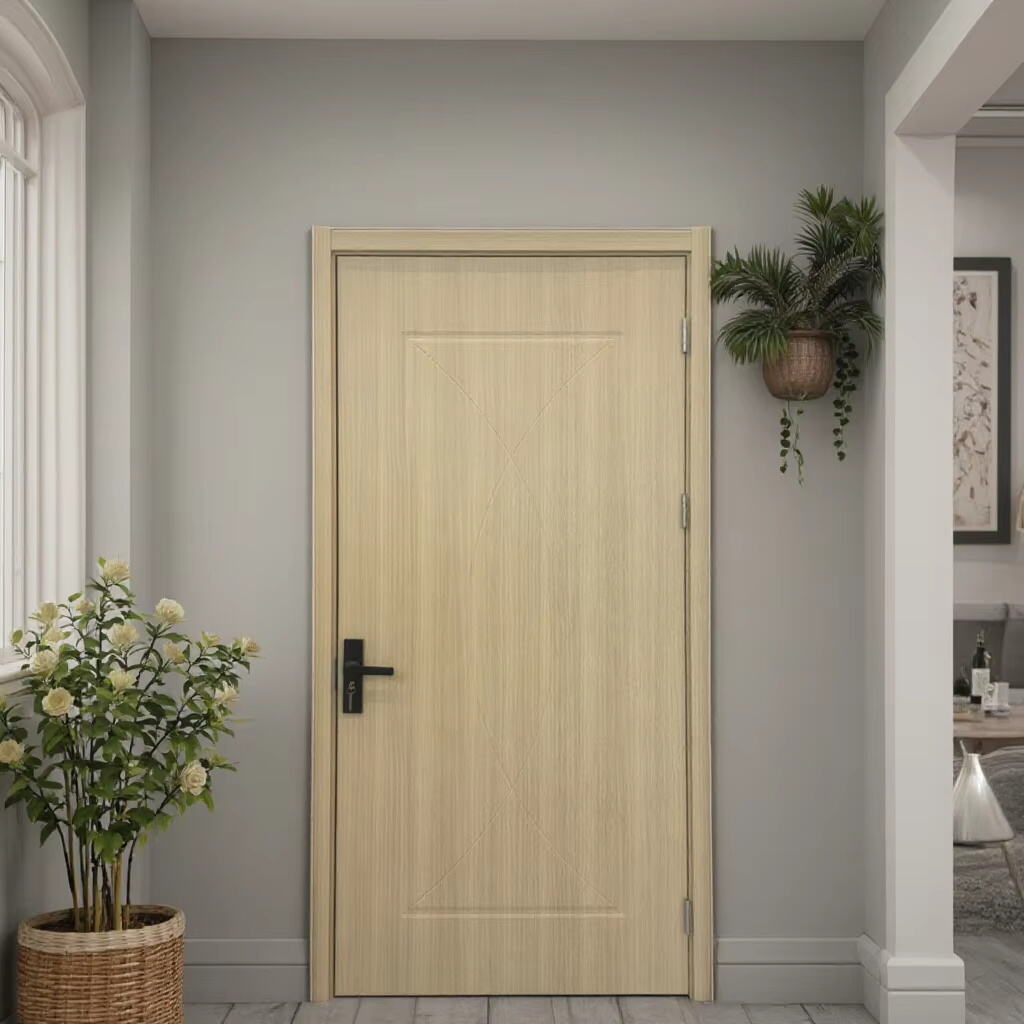Introduction to Door Manufacturing
Why Precision Matters in Door Creation
Precision is paramount in door manufacturing as it directly affects the structural integrity and functionality of doors. Accurate measurements are essential to avoid issues such as warping or misalignment, which can compromise door longevity. Studies reveal that improperly specified doors may lead to frequent replacements, resulting in additional costs. Modern manufacturing employs tools like CAD software and precision cutting machinery to enhance accuracy, ensuring each door fits perfectly into its intended space. The use of high-precision tools not only facilitates the creation of complex designs but also ensures that each finished product meets rigorous quality standards. By prioritizing precision, manufacturers can deliver doors that are both durable and reliable.
Design Phase: From Concept to Blueprint
Collaborating with Clients for Customization
The design phase of door manufacturing is where customization plays a pivotal role, with client collaboration being key to success. Engaging clients in this process not only increases their satisfaction but also ensures that the final product perfectly aligns with their vision and needs. This joint effort allows door manufacturers to create distinct entries that stand out, offering both aesthetic appeal and functionality. For example, a successful project involved a collaboration where a range of personalized elements were integrated, such as specific wood types and decorative glass features, ultimately enhancing the client's satisfaction and the marketability of the final product.
Innovative Design Techniques for Modern Doors
Modern door design embraces cutting-edge techniques to balance functionality and aesthetics. One of the prominent methods is 3D modeling, which allows manufacturers to create detailed prototypes digitally before production begins. This innovation ensures precision and aids in identifying potential design flaws early. With growing concerns over security and energy efficiency, doors are evolving to include advanced features such as multi-point locking systems and insulated cores. These innovations are not just meeting present-day needs but are setting new standards in the industry. The integration of such technologies emphasizes the blend of aesthetic appeal and performance in modern door designs.
Balancing Aesthetics and Structural Integrity
Achieving the perfect balance between aesthetics and structural integrity is a crucial challenge in door manufacturing. While the visual appeal is essential, the door must also be durable and secure. Manufacturers achieve this by incorporating design elements that promote both strength and beauty. For instance, the use of reinforced materials ensures durability without compromising on design elegance. Examples include doors made from steel with wood veneer finishes that offer the resilience of metal and the charm of wood. This approach not only enhances the door's visual appeal but also guarantees longevity and safety, making it a preferred choice for both designers and clients alike.
Material Selection and Preparation
Choosing High-Quality Wood and Composites
Selecting high-quality materials is crucial in door manufacturing, as it determines the product's longevity and appeal. Commonly used materials include hardwoods like oak and mahogany, prized for their durability and rich appearance. Composites, such as medium-density fiberboard (MDF), offer a cost-effective and flexible alternative. Recently, there has been a growing trend towards eco-friendly materials driven by market demand for sustainable solutions. According to the California Air Resources Board (CARB) II compliance, the use of composite wood products with low formaldehyde emissions is increasing, ensuring safety and environmental responsibility.
Cutting and Seasoning Materials for Durability
The processes of cutting and seasoning materials play an essential role in enhancing door durability. Precise cutting ensures that each component fits seamlessly, while seasoning reduces the moisture content of the wood, preventing future deformations like warping and splitting. Statistics show that proper seasoning can reduce defects by up to 50%, ensuring a longer lifespan for the doors. By investing in these meticulous processes, manufacturers guarantee that doors can withstand various environmental conditions without compromise.
Advanced Tools for Material Precision
The use of advanced tools like laser cutters and Computer Numerical Control (CNC) machines has revolutionized door manufacturing. These tools provide unparalleled precision, cutting even the most intricate designs accurately and quickly. As technology advances, the efficiency of the material preparation phase has significantly improved, leading to reduced waste and optimized production cycles. Tools like these are crucial in maintaining precision in the door industry, ensuring each product meets high-quality standards before reaching customers' hands.
Core Manufacturing Process Steps
Assembly of Door Frames and Panels
The assembly of door frames and panels is a crucial phase that melds craftsmanship with efficiency. Typically, this process involves assembling stiles, rails, and panels into a cohesive structure. Skilled craftsmanship is crucial as it ensures these components align perfectly, using techniques such as mortise-and-tenon joints or dowel joints for durability. As automation advances, assembly methods are evolving, bringing heightened precision and increased productivity. Automated systems now assist in positioning and joining parts swiftly, significantly enhancing output rates and reducing labor costs.
Vacuum Forming for Composite Door Skins
Vacuum forming is a transformative process employed to create composite door skins that are both lightweight and durable. The procedure involves heating a sheet of composite material and then forming it over a mold under vacuum pressure, resulting in a seamless skin. This method not only speeds up production but also reduces material waste. Data shows that vacuum forming can enhance production speeds by up to 40%, while minimizing leftover materials, making it a preferred choice for efficient, eco-conscious manufacturing.
S-Glaze Technology for Secure Glass Integration
S-Glaze technology represents a significant advancement in the secure integration of glass panels into door designs. This method ensures that glass units are seamlessly embedded into the door frame, reducing the risk of breakage or displacement. It meets stringent safety standards, offering enhanced security and aesthetics. Experts praise S-Glaze for its innovative approach to safety, ensuring glass stability even under adverse conditions, thus elevating the security standard in contemporary door manufacturing.
CNC Machining for Perfect Alignment
CNC machining has revolutionized door manufacturing by providing unparalleled precision in cutting and shaping components for perfect alignment. These machines utilize computer-controlled tools to achieve exact specifications, ensuring each piece fits precisely within the assembly. The technology significantly reduces material waste, optimizing resource use and enhancing production efficiency. By achieving such high levels of accuracy, CNC machining not only improves the quality of doors but also facilitates a faster production turnaround, aligning with modern manufacturing demands.
Quality Control and Testing
Ensuring the Door Meets Safety and Durability Standards
For doors to leave the factory, they must meet stringent safety and durability standards. These standards ensure that the doors are reliable, efficient, safe, and environmentally responsible. Key safety standards include vertical loading capacity, static twist resistance, and ability to withstand hard and soft body impacts. Moreover, the California Air Resources Board (CARB) II compliance ensures doors do not emit harmful formaldehyde levels, preserving indoor air quality. According to a detailed study in the Journal of Manufacturing Processes, quality control is critical in enhancing product performance and customer satisfaction. As a result, doors endure rigorous testing—some opened and closed over 20,000 times—to simulate real-world conditions, ensuring longevity and robustness.
Final Checks for Design Consistency
The final design checks are paramount to maintain consistency across door products before they are packaged and shipped. This process involves meticulous inspections, primarily focusing on aesthetic harmony, dimensions, and construction standards. Quality assurance departments employ various methodologies to ensure every door aligns with brand specifications and customer expectations. These processes not only uphold the brand's integrity but also reinforce consumer trust and satisfaction. By executing thorough final checks, manufacturers ensure that each door complements the architectural appeal with precision, maintaining high standards of craft and durability as expected by customers globally.
Packaging and Delivery
Packaging the Door for Safe Transport
Proper packaging is crucial to ensure that doors remain undamaged during transportation. Different methods are employed to safeguard doors, including the use of high-quality materials such as foam padding, bubble wrap, and sturdy cartons to secure the door within its package. For instance, using tightly fitted cartons can prevent the door from shifting during transit. This careful attention to packaging not only shields the door from physical damage but also maintains product quality by protecting finishes and features from potential environmental impacts such as moisture or excessive heat.
Delivery Logistics and Reaching the Customer
Efficient logistics are essential for the timely delivery of doors to customers. Delivery systems typically involve a coordinated approach that includes selecting the right transportation method—freight, truck, or direct shipping—and scheduling to optimize delivery times. By analyzing case studies, companies can gain insight into achieving higher customer satisfaction rates, where precision in logistics plays a crucial role. For example, statistics reveal that streamlined delivery processes can enhance customer satisfaction by ensuring that doors arrive on schedule, contributing to overall customer happiness. This strategic planning is vital in building robust customer relations and maintaining high retention rates.
Conclusion
Reflection on the Journey from Design to Delivery
The process of creating a quality door involves a meticulous journey that starts from selecting the right materials and ends with a well-packaged delivery to the end-user. Every stage, from the initial design sketches to the final touches of varnishing, plays a critical role in the overall quality and durability of the door. This journey not only emphasizes the craftsmanship involved but also highlights the industry's commitment to quality products. By continuously reflecting on this process, manufacturers can identify areas for improvement, fostering a mindset of continuous enhancement in the door manufacturing sector.
The Role of Innovation in Modern Door Manufacturing
Innovation has become a driving force in the evolution of door manufacturing, pushing the industry towards new frontiers. Incorporating advanced materials, like engineered wood and composites, and utilizing cutting-edge technologies, such as CNC routers and automated assembly lines, are setting new standards. Expert opinions suggest that future trends could include more sustainable practices and smarter door solutions, integrating electronics for enhanced security and convenience. These innovations not only meet current demand but also anticipate future needs, showcasing the dynamic nature of the door manufacturing field.

